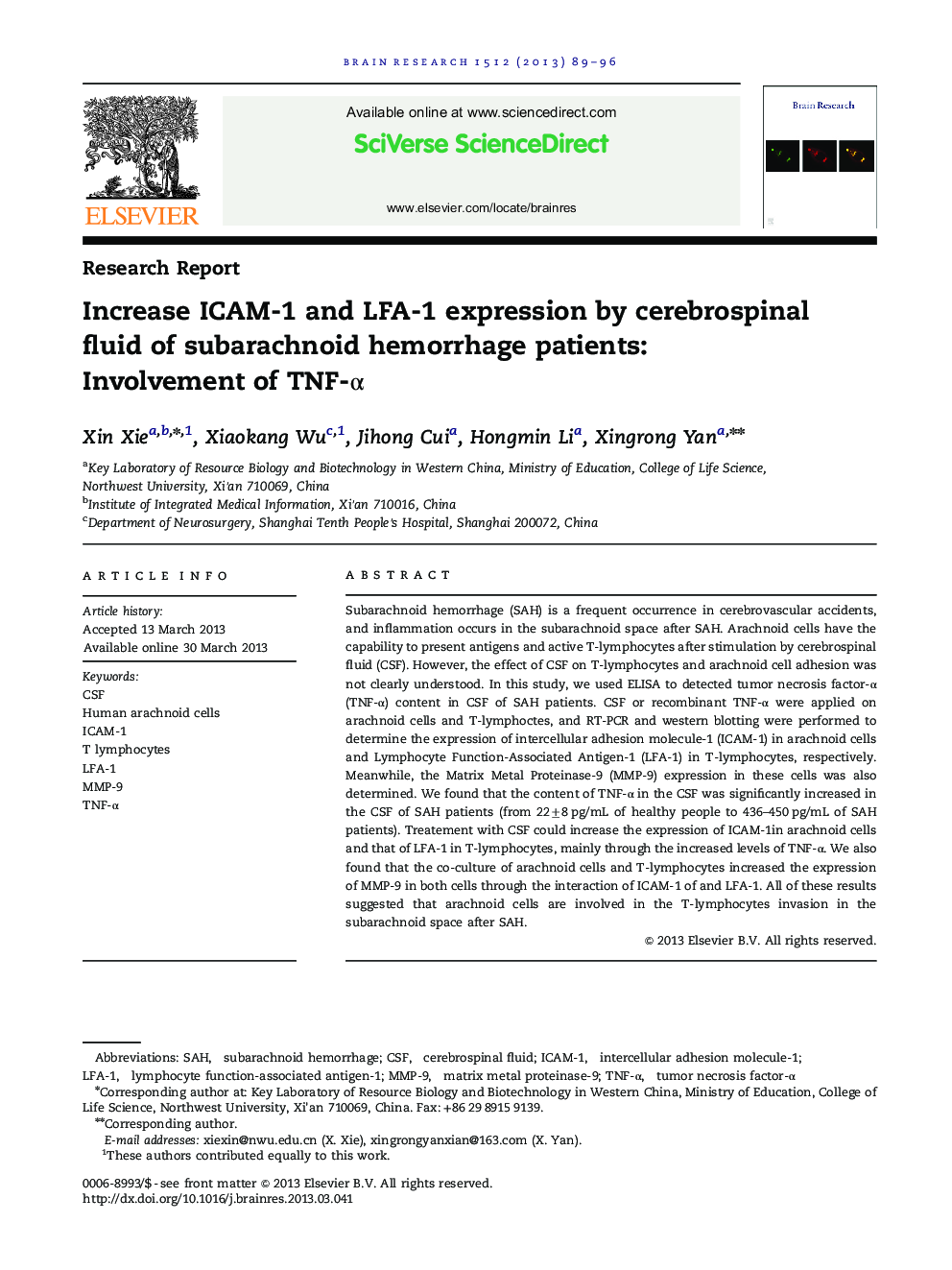| Article ID | Journal | Published Year | Pages | File Type |
|---|---|---|---|---|
| 4324685 | Brain Research | 2013 | 8 Pages |
Abstract
Subarachnoid hemorrhage (SAH) is a frequent occurrence in cerebrovascular accidents, and inflammation occurs in the subarachnoid space after SAH. Arachnoid cells have the capability to present antigens and active T-lymphocytes after stimulation by cerebrospinal fluid (CSF). However, the effect of CSF on T-lymphocytes and arachnoid cell adhesion was not clearly understood. In this study, we used ELISA to detected tumor necrosis factor-α (TNF-α) content in CSF of SAH patients. CSF or recombinant TNF-α were applied on arachnoid cells and T-lymphoctes, and RT-PCR and western blotting were performed to determine the expression of intercellular adhesion molecule-1 (ICAM-1) in arachnoid cells and Lymphocyte Function-Associated Antigen-1 (LFA-1) in T-lymphocytes, respectively. Meanwhile, the Matrix Metal Proteinase-9 (MMP-9) expression in these cells was also determined. We found that the content of TNF-α in the CSF was significantly increased in the CSF of SAH patients (from 22±8 pg/mL of healthy people to 436-450 pg/mL of SAH patients). Treatement with CSF could increase the expression of ICAM-1in arachnoid cells and that of LFA-1 in T-lymphocytes, mainly through the increased levels of TNF-α. We also found that the co-culture of arachnoid cells and T-lymphocytes increased the expression of MMP-9 in both cells through the interaction of ICAM-1 of and LFA-1. All of these results suggested that arachnoid cells are involved in the T-lymphocytes invasion in the subarachnoid space after SAH.
Keywords
Related Topics
Life Sciences
Neuroscience
Neuroscience (General)
Authors
Xin Xie, Xiaokang Wu, Jihong Cui, Hongmin Li, Xingrong Yan,
